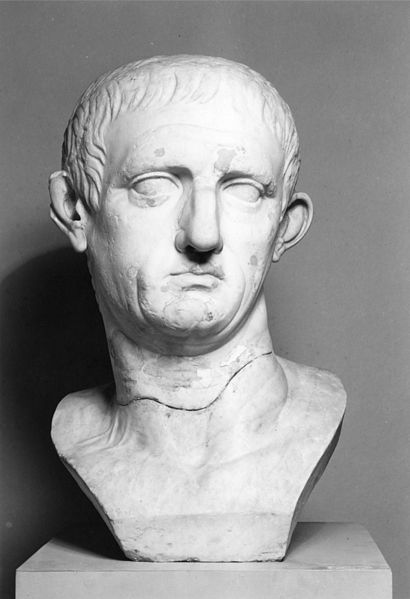Emeralds and Health
How Emeralds Are Used For Health

Throughout history many gemstones, including emeralds, have been thought to possess powerful healing properties. Since emerald is one of the earliest minerals collected by man, throughout the ages a large number of medical “virtues” have been attributed to it. Traditional beliefs indicate that emerald benefits the eyes, treats a host of minor ailments, prevents serious illness or death by poison, and boosts mental health.
Eye Ailments
In early days, gems were classified by color, and the color of a gem was thought to have an effect on the type of malady it was capable of healing. From antiquity, green was regarded as the color most beneficial to the eyes.
According to Pliny’s Natural History (c. 77 A.D.), no other stone is better at creating a sense of calm as it restores the eyes:
“Indeed no stone has a color that is more delightful to the eye, for whereas the sight fixes itself with avidity upon the green grass and foliage of the trees, we have all the more pleasure in looking upon the emerald, there being no green in existence more intense than this. And then, besides, of all the precious stones, this is the only one that feeds the sight without satiating it…If the sight has been wearied or dimmed by intensively looking on any other subject, it is refreshed and restored by gazing at this stone. And lapidaries who cut and engrave fine gems know this well, for they have no better method of restoring their eyes than by looking at the emerald, its soft, green color comforting and removing their weariness and lassitude.”

Pliny goes on to relate that the Roman Emperor Nero had notoriously bad eyesight. Nero’s reign (54 – 68 A.D.) focused primarily on diplomacy, trade, and increasing the cultural capital of the Empire. In accord with the latter, he ordered the building of theatres and promoted athletic games. According to numerous sources, he used an emerald to view both theatrical productions and gladiatorial competitions from his comfy seat in the stands. King (1865) opines that the “stone must have been hollowed out at the back and thus have acted as a concave lens in assisting his sight to distinguish clearly what was going on so far below the imperial seat. But this virtue then must have been ascribed to the material, not to the form of the stone.”
Fortunato Pio Castellani, 19th century jeweler extraordinaire and lay historian, was intrigued by the jewelry and craftsmanship of the ancients. In his “Gems, Notes, and Extracts,” he indicates that:
“It appears that the ancients applied the term ‘beryllus’ also to a magnifying glass, and perhaps they used aquamarina for the same purpose. This supposition is rendered probable from two reasons; the first is that in the German language spectacles are called ‘brille,’ and no other derivation has been for this word than the Latin ‘beryllus;’ the second is that Nero is said to have looked at the spectacle in the theatres through a very large emerald…Nicola de Cusa, Bishop of Brixen, who died in 1454, gave the name of Beryllus to one of his works for this reason, that ‘by means of its assistance, people could understand things otherwise incomprehensible…The beryl is a bright, transparent, colourless stone, to which a concave or convex form is given by art, and by means of which whoever looks through it sees things otherwise invisible to the naked eye’.”

Over time, the belief in emerald’s salubrious effect on our vision expanded to include a host of injuries and diseases connected to the eyes. Curiously, although emerald was known to have a beneficial effect on human eyes, it was thought to cause blindness in serpents and poisonous reptiles. According to Ahmed Teifashi, an Arabian gem dealer in the 13th century (Kuntz, 1913):
“After having read in learned books of this peculiarity of the emerald, I tested it by my own experiment and found the statements exact. It chanced that I had in my possession a fine emerald of the zababi variety, and with this I decided to make the experiment on the eyes of a viper. Therefore, having made a bargain with a snake-charmer to procure me some vipers, as soon as I received them I selected one and placed it in a vessel. This being done, I took a stick of wood, attached to the end a piece of wax, and embedded my emerald in this. I then brought the emerald near to the viper’s eyes…The reptile was strong and vigorous, and even raised its head out of the vessel, but as soon as I approached the emerald to its eyes, I heard a slight crepitation and saw that the eyes were protruding and dissolving into a humor.”
Fertility and Childbirth
The Egyptians were the first to use emerald as a cure for infertility and it was employed for this purpose for many centuries thereafter. To prevent miscarriage, pregnant women were encouraged to wear emeralds around their necks. It was also believed to alleviate the pain of childbirth if strapped to the thigh of the expectant mother (Kuntz 1915).

Emeralds are also said to honor Astarte, the Phoenician goddess of fertility, love, and war. The Greeks most likely changed her name into the more familiar Aphrodite. Some of Astarte’s symbols are represented by horns, stars, and doves – symbols of love and fertility.
Serious Illness and Death by Poison
Emerald has long been used to cure serious diseases such as malaria, cholera, and dysentery. One physician prescribed an emerald to be worn suspended near the abdomen and another placed in the mouth as a cure for dysentery. According to Kuntz (1915), a “tincture of emerald is recommended by the Arab physician Abenzoar as an internal remedy for the cure of dysentery, the dose prescribed being six grains.”
In the 16th century, Anselmus Boetius de Boodt, author of one of the most influential mineralogy texts ever written, provides us with the recipe for preparing the Tincture Smaragdi:
“Pound the Emerald in an iron mortar, sift the powder through muslin, then cover it with spiritus urinae (sal volatile): the spirit must be distilled off, leaving the powder of a grey colour, but which will communicate that of the emerald to spirits of wine.”

Emerald was also thought to prevent epilepsy. According to Agricola (1546, translation by Bandy and Bandy 1955):
“It combats epilepsy as though it were a deadly enemy until it either overcomes the lesser power of the disease or is overcome by a greater power. In the former case the stone remains whole and intact but in the latter case it is fractured into many small pieces. For this reason, kings and priests suspend it from the necks of boys and wear it in rings in order to test whether it will have the power to expel this horrible disease.”
Emerald was also effective in lowering life-threatening fevers regardless of their cause. Kuntz (1915) informs us that “coral and safran, if wrapped in the skin of a cat, were believed to have marvelous powers; and when emeralds were added to the coral the talisman would drive off a mortal fever. To have the proper effect, however, it must be attached to the neck of the patient.”
In the not too distant past, many of Europe’s best-appointed dining tables were furnished with an article called an arbre d’epreuve (proving tree) or a langier (serpent’s tongue). This item, often made of precious metals, had suspended from it ten or more stones, which were believed to have the power to detect or neutralize any poison in the food being served. Precious stones, including emerald, were part of proving trees, although novelties such as shark’s teeth and toadstones were also employed.

Before the food or wine was served to royalty or other important personages, a liveried servant would dip the stones into them looking for signs of poison. It was believed that the stones would sweat, change color, or exhibit other phenomena if poison was present—although it was also common practice to employ an official taster for further insurance.
In the 16th century, emeralds and other stones were also incorporated into tonics to countermand the effects of either poison or the plague. According to Kuntz (1913):
“Bueus asserts that if the weight of eighty barley-corns of its powder were given to one dying from the effects of poison, the dose would save his life. The Arabs prized emeralds highly for this purpose, and Abenzoar states that, having once taken a poisonous herb, he placed an emerald in his mouth and applied another to his stomach, whereupon he was entirely cured.”

All told throughout history, emerald has been prescribed as an effective cure for a host of ailments including kidney stones, liver disease, skin diseases, wounds, hemorrhages, hemorrhoids, belching, hiccoughs, heart ailments, diabetes, rheumatism, sore throat, toothaches, headaches, and insomnia.
Mental Health Benefits
After noting the restful effects of the color green on the eyes, the ancients apparently decided that the benefits of emerald went beyond those organs and attributed equally salubrious effects on the brain and psyche. According to Kuntz (1915) emerald was prescribed as an antidote for melancholia to be taken three times a day for nine consecutive days. The father of the modern botany and zoology, Dominican monk Albertus Magnus (c. 1193-1280), also informs us that emerald improves memory and calms restless souls.
With so many meanings prescribed to emeralds, it should come as no surprise that emeralds have a lengthy history as expressions of love. Discover that next in Emeralds and Love, Engagement, and Marriage.
